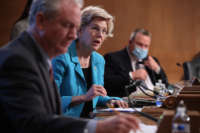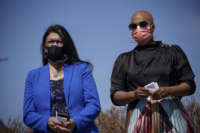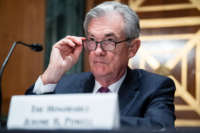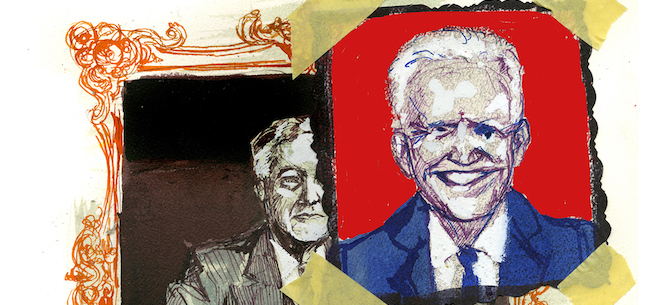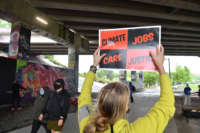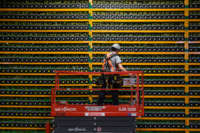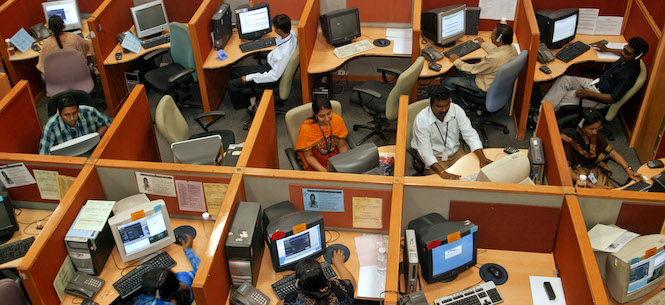[Original interview published May 4, 2010]
Is the Federal Reserve an almighty-like “creature” or rather extremely limited in its essential operations? L. Randall Wray, an expert on monetary policy, answers questions with regard to the Fed and central banks in general.
L. Randall Wray is a professor of economics and research director of the Center for Full Employment and Price Stability at the University of Missouri–Kansas City (UMKC).
The approach of the economists at UMKC, which has been dubbed “The Kansas City School,” builds on the work of Abba P. Lerner, John Maynard Keynes and Hyman P. Minsky.
Mr. Wray’s current research focuses on providing a critique of orthodox monetary policy, and the development of an alternative approach. He also publishes extensively in the areas of full employment policy and the monetary theory of production. With Levy Institute President Dimitri B. Papadimitriou, he is working to publish, or republish, the work of the late financial economist Hyman P. Minsky, and is using Minsky’s approach to analyze the current global financial crisis.
Mr. Wray is the author of “Money and Credit in Capitalist Economies”, 1990, and “Understanding Modern Money: The Key to Full Employment and Price Stability”, 1998. He is also coeditor of, and a contributor to, “Money, Financial Instability, and Stabilization Policy”, 2006, and “Keynes for the 21st Century: The Continuing Relevance of The General Theory”, 2008.
He taught for more than a decade at the University of Denver and has been a visiting professor at Bard College, the University of Bologna, and the University of Rome (La Sapienza). He received a B.A. from the University of the Pacific and an M.A. and a Ph.D. from Washington University, where he was a student of Minsky.
Mr. Wray, I conducted not so long ago an interview with a colleague of yours from the Economics Department at the University of Missouri in Kansas City, William K. Black, and asked him if the Federal Reserve, as it exists today, shouldn’t being abolished for the sake of humanity. Mr. Black answered this way:
“It depends on what one means by ‘as it exists today.’ My colleague Randy Wray is the expert on this. He makes the persuasive point that the Fed’s essential operations are extremely limited and not terribly complex.”[1]
Now that I am able to ask you, Mr. Wray: is this true that the Fed isn’t the almighty-like “creature” as perceived in the view of the general public? What makes its “essential operations extremely limited”?
Milton Friedman played the biggest role in promoting the view that the Fed is the all-powerful Wizard of Oz, spinning dials and controlling the money supply which then determines output and employment. However, the Fed is not to be trusted, hence, should be constrained by a constant-rate-of-growth-of-money-supply rule. This was finally tried in the disastrous early 1980s great monetarist experiment run by Fed Chairman Paul Volcker (simultaneously attempted in Thatcher’s UK). I say disastrous because it wiped out half of our thrifts (home mortgage lenders—but not before helping to set off a wave of fraud that was the subject of Bill Black’s book[2]). By the mid-1980s the Fed had given up money targets, and had also abandoned the Friedmanian myth that money and output are closely correlated—with money driving output.
Over time, the Fed (and all central banks of the developed nations) explicitly adopted interest rate targets and some version of the “New Monetary Consensus” Taylor Rule. The central bank is supposed to adjust its interest rate target in response to output gaps (deviation of output from its “natural rate”) and inflation gaps (deviations of inflation from the desired rate). It is believed that greater transparency helps to manage market expectations about inflation, which is ultimately the best way to keep prices in check. And that, in turn, is supposed to be the main way in which central banks contribute to maintaining robust economic growth.
In truth, central bank policy has always determined the overnight interbank lending rate (called the fed funds rate in the US). Leaving to the side regulatory and supervisory power for a moment, that really is all the central bank does. There is no evidence that changing the overnight interest rate (within the usual range) has any significant or predictable impact on the economy. It truly is a Wizard of Oz—if one recalls that the Wizard behind the curtain actually had no power at all. Now, I think that it can be demonstrated that both the great “Maestro” (Alan Greenspan) and the current Chairman (Ben Bernanke) have consistently misread the economy and hence persistently adopt the “wrong” policy (raising rates going into recessions, for example) but fortunately interest rate policy has little impact on the economy. What is unfortunate is that for a very long time policymakers believed that economic policy could be left to the “omnipotent” Fed—which means that the truly powerful fiscal policy has been neglected. By the way, this is an even bigger problem in Euroland—whose monetary policy has been approximately the same as that in the US, but whose fiscal policy has been even more anaemic, that is to say, chronically too tight. (It must be that way, because individual euro nations do not have independent fiscal capacity.)
One essential instrument through which the Fed can influence the conditions of the market-place is, I believe, the “Federal Open Market Committee” based in Washington D.C. What are the instruments of this Committee? And can you understand that critiques of the past and the present argue(d) that those instruments enable the Fed to create the whole thing that we know as the “business cycle” of boom and bust essentially by itself? Is this claim true or false – or does reality take place somewhere in-between?
As I just discussed, really all the Fed does is set and manage the overnight interest rate—which has little impact on anything of importance. For example, following what the Japanese did when their own economy collapsed a generation ago, the Fed responded to the crisis by lowering the interest rate essentially to zero. And just as this had no positive impact on the Japanese economy over the past two decades, it had no discernible impact on the US economy. Bernanke had long argued that what Japan needed was “quantitative easing” to supplement the zero rate policy. He was always vague about what that means, but he had this idea that the Fed can “push on a string”—encourage banks to lend and borrowers to borrow by “pumping liquidity” into the economy. This would take the form of increasing bank excess reserves—providing them with far more reserves than they wanted to hold—on the belief they would then lend.
Of course, it is all pretty silly and amounts to combining a misunderstanding with a nice slogan. Bernanke still, apparently, believes in the long discredited notion of a “money multiplier”: when banks have excess reserves they expand loans and deposits by a multiple. But banks do not operate that way and never have operated that way. The “multiplier” is just an ex post identity (we can always divide deposits by reserves and will find a number greater than one) with no causal implications. Banks neither lend reserves nor wait for reserves before they lend. If faced with good customers willing to borrow, banks make loans and create deposits. If they then find they need reserves to meet legal requirements or for clearing purposes they go to the fed funds market to get them; if there are no extra reserves to be found, the Fed provides them to prevent the fed funds rate from being driven above target. So what quantitative easing really amounts to is keeping excess reserves in the system and the overnight rate near zero. Nothing new about it, but “quantitative easing” is a nice slogan with no economic implication. Banks will not lend and borrowers will not borrow because they know we are in a deep and long recession.
However, what is interesting and in some ways scary is that the Fed has expanded its balance sheet to $2 trillion by purchasing assets; it has also made all sorts of guarantees of private liabilities. And we have no idea what the Fed has bought or promised because it refuses to tell us. In the US there is a movement to force an audit of the Fed. Until that is done we cannot know what Bernanke and company have done under cover of the quantitative easing slogan. I am not so much worried about the likely losses the Fed will suffer on the toxic waste it has borrowed and guaranteed. Rather, I would like to know what favors Bernanke has provided to Timmy Geithner’s buddies on Wall Street. So far everything we have found out about what Geithner did when he was at the NY Fed stinks to high heavens. It sure looks like scandal and fraud of historic proportions. I expect that we are living through what will long be considered to be the worst scandal in human history.
So to provide a more direct answer: no the Fed can neither create nor cure recessions and crises. It can determine the overnight interest rate, and it can provide reserves on demand. It can also buy anything for sale simply by crediting reserves (a point Bernanke made in testimony before Congress). We used to think the Fed would never buy bad private assets—but Bernanke changed all that. I do think Bernanke made mistakes, and he had to do a lot of learning “on the job” because he came out of academia with inadequate understanding of monetary operations. Greater competency would have had a marginally better outcome. But, really, only appropriate fiscal policy could have led to a quicker recovery. We did not get that.
If it is true that money rules the world, isn’t it then true that those who rule the money actually rule the world? Of course, the inevitable next question has to be after this one before: who owns the Federal Reserve which issues the reserve currency of the world?
Well, the Fed is nominally owned by private banks, who own shares in the Fed and receive a maximum 6% return on equity. Private banks play some role in selecting officers of district banks. Some Fed officials work their way up through the Fed after spending time in private banks. However I would not make too much of any of this. The Fed is a creature of Congress, created in the 1913 Act, with subsequent legislation dictating functions and policies. In other words, it really is a branch of government, albeit an unusual one since there are private shareholders. Does the Fed cater to financial institutions? Yes, but so does the Treasury—and as we know, Goldman Sachs has been running the Treasury for the past three Presidencies—Clinton, Bush and Obama. I think that is of greater import than is Wall Street’s control of the Fed. Capture of regulators is nothing new, of course. It has, however, become much more obvious and complete since Clinton was elected. He brought in Rubin and essentially handed Washington over to Wall Street. Washington then deregulated finance, which responded in the expected manner by “Hoovering” up 40% of all US corporate profits. The triumvirate of Rubin, Greenspan and Summers led the charge, and then added Paulson, Geithner and Bernanke. Remarkably, only Greenspan’s reputation has suffered in the collapse—and of this team he was the only one who actually raised some doubts during the speculative bubbles that followed.
Money might “rule the world” but it is a big mistake to believe that the Fed controls money. Further, while the dollar is the reserve currency, it is also a mistake to attribute too much power to Washington. It always takes (at least) two to tango. The US current account deficits provides the dollar assets desired by the rest of the world; our willingness to run a trade deficit is required, as is the positive net saving desire of the rest of the world. And, in truth, most of these decisions that lead to current account deficits for us, and capital account surpluses for the rest of the world, are made in the non-government sectors.
As far as I know the Federal Reserve is a private entity designed at the beginning of the 20th Century by private bankers under rather suspicious circumstances. Its official mandate is to be “the lender of last resort” in order to prevent financial crises like the one of 1907. Did it fulfil this mandate to prevent crises? Or didn’t the Fed already fail to do so at the end of the Roaring Twenties? Economists like Milton Friedman and Murray Rothbard for example argued that the Federal Reserve System not only failed to avoid the problem it was created against but rather helped to cause it in the first place. What is your opinion on this critical question?
I think Friedman, et.al., have got that wrong. Yes, the Fed was created to be a lender of last resort, to stop the frequent bank runs experienced in the US. And of course we were centuries behind European nations in the establishment of a central bank (we had some failed attempts)—an interesting history related to America’s populism and fear of east coast bankers. I won’t go into that. But I certainly would not call the creation of the Fed “illegitimate”—we had a disastrous crisis in 1907 that set in place the process that led to the Fed’s creation. In the 1929 crash the Fed actually did act aggressively, lending reserves and lowering the interest rate. The problem was that the US was on a gold standard and when gold started leaving the country the Fed raised the interest rate to stop the flow. Friedman looks at bank lending and measures of the money supply and blames the Fed for not increasing the money supply. In truth—and just like today—banks would not lend and borrowers would not borrow for the simple reason that if they had, defaults were almost certain. Only if the Fed flew helicopters and dropped bags of cash could it have increased the money supply. But that is not monetary policy—it is fiscal policy and is normally done by the Treasury. In other words the Fed had no way to increase the money supply. Now what Bernanke has done is to have the Fed buy bad assets—but that is not something central banks did in the 1930s. Yes if the Fed had gone out and bought loans and corporate bonds and equities, and bought farms and houses, it could have done some real good. But I have never heard Friedman argue for such policies.
How do you judge on the performance of the Fed in the build-up and the handling of this crisis? And do you agree or disagree with William Greider, the author of “The Secrets of the Temple”, who came in an article for “The Nation” to the conclusion that “the Fed is the problem, not the solution”?[3]
I have a lot of respect for Greider’s work. Now as I said earlier, I do think Greenspan and Bernanke have almost always got things wrong—they always misread the economy. They try to fight inflation exactly when the economy heads into a recession. They usually fail to see speculative booms. They promote deregulation and promote risky new financial practices and products. They raise interest rates at the wrong time; indeed, they cause a lot of asset price instability by continually monkeying around with interest rate targets. That is not good, but impacts on financial asset prices are usually short-lived. And as we now know, the NY Fed, especially, aids and abets dangerous practices and even fraud. So while I think most people overestimate the power in the hands of our modern day Wizard of Oz, I do agree that we ought to tie the hands of the Wizard.
So here is what I propose: Congress should mandate that the Fed set the overnight rate at 25 basis points (0.25%) and leave it there. Forever. That would be the extent of monetary policy in the US. A very simple robot would replace the FOMC, programmed to pay 25 basis points on reserves, and charge 50 basis points on loans of reserves to chartered banks.
Now there are two other issues that remain. First, should the Fed lend to “shadow banks”? Our current crisis began in the shadow bank sector, when Lehman, Bear, Goldman, and others could not raise funds—essentially facing a “bank run”, not on deposits but rather on commercial paper and other short-term instruments. The Fed has typically dealt with such problems in the past by calling in chartered banks and telling them it would open up its discount window to any bank that would lend to non-bank financial institutions. In this way, commercial bank could have serviced their investment bank customers.
Alternative, the Fed could lend directly to shadow banks, but only on the condition that they open their books to the Fed. The Fed would then lend against good assets to stop the run, and would use the opportunity to conduct a thorough examination of the books. Of course, an insolvent institution would not like such an intrusion—but that would be the cost imposed in order to get the benefit of Fed lending. No one should lend to a customer without assessing credit worthiness. If the Fed then found the institution to be insolvent, a resolution (including bankruptcy proceedings) would begin. If the Fed had dealt with the shadow institutions in this manner when the crisis hit, there is little doubt that many of them would have been resolved and closed. Of course, that is why the commercial banks would not lend to them—it was widely believed that all large institutions were massively insolvent due to toxic waste on their books. We have rescued them and encouraged them to go on with the same practices that created their insolvency. The situation is now much worse than it was in 2007.
Second, we have issues of regulation and supervision of financial institutions, including protection of consumers of financial products. In the US there is a movement to consolidate regulation and supervision, possibly in the hands of the Fed. It is ironic that the Fed has long demonstrated that it has no interest in regulating or supervising wayward institutions, but it now is fighting hard to become the super-duper regulator. I do not think the Fed is reformable. It is probably far better to consolidate regulation and supervision at the Treasury—with the caveat noted above that since Clinton that has been run by Goldman. Still, I think it is easier to reform the Treasury. I would, however, retain the Fed as lender of last resort—and it would then have the power as a lender to examine the books of any institution to which it lends.
Let’s broaden the perspective a little bit. How comes modern money in general into existence “out of thin air”?[4] Is there a problem related to this process when it is connected with compound interest and the exponential growth of compound interest? Further on, in case this observation by Richard Heinberg is accurate:
“Our current money system requires constant growth so as to enable repayment of the interest on the debts that created the money to begin with”,[5]
isn’t this then a root-cause for many ills in the world that can only become bigger and bigger as long as we follow this constant growth-dogma?
Yes, interest gives rise to a logic and a necessity for growth of money values: nominal growth must exceed the interest rate to avoid rising debt ratios (in a sort of “Ponzi” or pyramid scheme). But I do not see that as a problem—capitalist systems have an inherent logic of growth, too—M-C-M’ as Marx put it. As I said earlier, I favour a near-zero overnight rate—which is equivalent to Keynes’s call for “euthanasia of the rentier”. Other rates will be above zero, to compensate for liquidity and credit risks. But in any case, we would have much lower rates than at present, and a greater probability that nominal growth would exceed the nominal interest rate. There is also much to be said about shifting the weight of the financial system away from private debt and toward public debt—but that is a topic for another day. Capitalist systems do much better with low private debt and high public debt—so long as government operates with its own sovereign floating exchange rate, non-convertible currency—what I call sovereign or modern money.
Modern money is 4000 years old, at least, as Keynes said. Our perception is blinded by the relatively recent experience with a gold standard and then with the fixed exchange rate Bretton Woods system—but that amounts to a total of a couple of hundred years that represented a sharp deviation from the normal situation. The “fiat money” we now have—what I prefer to call sovereign currency—is actually the usual case and the fixed exchange rate and gold standard are abnormal (they were actually imposed in a misguided effort to make the capitalist system “self-regulating”).
Money is not a commodity, it is a debt. Privately issued money is the debt of the issuer, and is often made convertible to the sovereign’s currency. The sovereign’s currency, in turn, is also a debt, denominated in the unit of account chosen by the sovereign. In both cases, the “fundamental law of credit” as Mitchell Innes called it, is that one must always accept one’s own liability in payment. The bank must take back its own IOU—in the old days, a bank note, today a bank check—in payments made to the bank (payments on loans, for example). That is also true of government. The difference is that the government imposes liabilities on us (fees, fines, taxes) and then we pay those off by delivering the government’s own currency back to government. The authorities have been doing this for 4000 years, at least, issuing clay tablets, metal coins, hazelwood tally sticks, paper, or electronic entries on computer tapes—then accepting them back in tax payment. Nothing new about it.
And it is for good, and for ill. Democracy helps to ensure that this is mostly to accomplish the public purpose. But, as we know, it is sometimes hard to impose democracy on our authorities. Democracy is a work in progress—imperfect but better than the alternatives.
Is it a problem that money creation lays in private hands?
Yes. And no. Look, the unit of account is social, national. Anyone can write an IOU in that unit of account. You cannot stop it, although you can put constraints on it. People can write too many IOUs, and they can accept too many. They will get in trouble. They will need bail-outs and bankruptcy procedures and debt enforcement. Thus, there is a role for government to play.
And, as discussed, government also creates “money” by issuing its own IOUs denominated in the social unit of account. It can use those to help achieve the public purpose, building roads and providing education and paying social security to retirees. It can spend too little, generating unemployment and failing to achieve the public purpose. It can spend too much, causing bottle-necks and too much aggregate demand, both of which can generate inflation. Again, getting all of this just right is a work in progress. Unfortunately, it is hindered by gross misunderstanding of the monetary system. From inception, the purpose of money was to move resources to the authorities. Over the past 4000 years we have tried to get democratic control over them. It is still an imperfect system, but I think that using the monetary system to move resources to the public sphere has proven to be a very desirable tool in achieving the public purpose. It would work better if people understood how it works.
But we also need to ensure that enough is left to satisfy private purposes. The private sector also uses the monetary system to achieve private purposes—again, for good and for ill. Exactly how much of our economy ought to be monetized is always a work in progress (education, childcare, transplantable organs), and how much is properly within the scope of the public sphere will always be contentious.
The Fed is currently boosting the money supply very rapidly. One would assume that this leads to inflation. In an interview with me, James Turk, the publisher of the “Freemarket Gold & Money Report” (http://www.fgmr.com), stated something quite noteworthy with regard to the US stock market:
“It is not rising because of good economic conditions. Instead, it is rising simply because too many dollars are being created and they have to end up somewhere. So a logical place for them is the stock market.”[6]
In other words: is it in financial assets like stock where the inflation is lingering right now?
I think it is quite misleading to claim the Fed is boosting the money supply. The Fed has increased bank reserves, as discussed above. But you and I do not have accounts at the Fed—we do not have access to those reserves. And banks (that do have reserves at the Fed) do not want to lend—even if we wanted to borrow.
I think that deregulation (promoted by the Fed and Treasury as discussed above) helped to make speculative bubbles possible. And Fed bailouts and protection of insolvent and probably fraudulent financial institutions (what Bill Black calls control frauds) has no doubt stoked the belief in the “Bernanke moderation” (an expectation that Bernanke will not let anyone fail, no matter how much toxic waste a Goldman Sachs accumulates) that makes our financial system bubble-prone (Frank Veneroso labels our economy “Bubble-onian”). Yes, we are in the middle of the biggest speculative bubble in human history—equities and commodities, and, believe it or not, real estate is still bubblicious. It will crash. And, yes the Fed deserves some blame. But it is not due to Fed money creation.
I would instead point to what my professor Hyman Minsky called money manager capitalism: too much money under management seeking the highest total returns. Borrowed money and leverage is a factor; but much of it is not borrowed. For example, pension funds have grown tremendously, and in the US are equal to about three-quarters of GDP. Their funds have to go somewhere—and have played the major role in bubbling-up commodities prices. We will need a much bigger crash to wipe out enough managed money to end the bubbles.
Two last questions, Mr. Wray. Why do we need central banks at all? Aren’t they, as James Turk puts it, “the real barbarous relic”?[7]
I do not think they are relics—or at least, I think the functions that central banks perform are still important. Let me put it another way: central banks were originally founded to provide government finance and to act as lenders of last resort. Both functions are still needed. To be sure, we could consolidate the central bank and treasury and have that consolidated power provide both of these functions. Indeed, I would strongly support that—not because it is necessary but because it would simplify procedures and make the processes much easier for the population and politicians to understand. Most importantly, we could end all the nonsense about fiscal sustainability. We would just have the treasury directly credit bank accounts when it spends and debit them when it taxes; we would stop issuing treasury bonds and everyone could stop worrying about government debt—because we would not issue any (the only government IOUs issued would be cash and reserves, neither of which are included in the debt numbers).
Thank you very much for taking your time, Mr. Wray!
By Lars Schall, May 3, 2010
SOURCES:
[1] Lars Schall: “The Great Global Bank Robbery, Part 2“, Interview with William K. Black, published at MMNews on April 21, 2010 under:
http://www.mmnews.de/english-news/5376-the-great-global-bank-robbery-part-2
[2] William K. Black: “The Best Way to Rob a Bank Is to Own One: How Corporate Executives and Politicians Looted the S&L Industry” (University of Texas Press, April 2005)
[3] William Greider: “Bailing Out the Bad Guys: What Congress and Bush Do Best”, published in The Nation on July 30, 2008 under: http://www.thenation.com/doc/20080818/greider
[4] George Washington: “German Central Bank Admits that Credit is Created Out of Thin Air”, published at Business Insider on March 20, 2010 under:
http://www.businessinsider.com/german-central-bank-says-credit-is-created-out-of-thin-air-2010-3
[5] Lars Schall: “How much oil is left?“, Interview with Richard Heinberg, published at MMNews on April 7, 2010 under:
http://www.mmnews.de/english-news/5283-how-much-oil-is-left
[6] Lars Schall: “Gold is not an ‘investment’. It is money”, Interview with James Turk, published at MMNews on November 24, 2009 under:
http://www.mmnews.de/english-news/4306-gold-is-not-an-investment-it-is-money
[7] James Turk: “The Barbarous Relic—It Is Not What You Think”, Committee for Monetary Research and Education, Inc., Monograph Number 55, published January 2006 under:
http://goldmoney.com/documents/barbarous-relic.pdf
http://www.mmnews.de/english-news/5463-truths-and-myths-of-the-federal-reserve
This post was originally published on Real Progressives.

